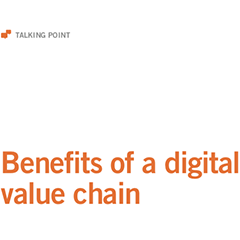It might sound like bringing sand to the beach, but in the PV sector a lot of friction inside business processes is still accepted. Looking at business processes in PV, several fields and several players can be identified. We at PES were intrigued by this statement from Stefan Wagner, Head of Marketing & Sales at Levasoft and asked him to expand on this.
With the exception of the end-customer, all participants of a value chain in PV seem to accept a lot of friction inside the processes and thus an extended time-frame in delivering results.
Planners satisfied
When we started the development of Solar.Pro.Tool in 2010 at Levasoft, we were aware, that there was no integrated solution for project planners, to design and deliver one project with one tool. So, it was clear to us, that all demands of project design needed to be covered by features inside Solar.Pro.Tool. This tool still is the only white-label software, world-wide to offer this.
No matter what type of project and no matter what needs to be calculated or documented, planners using Solar.Pro.Tool need no an additional software for their project.
Just one part of the chain
Having reduced friction during the planning process, we could see how project planners and customers gained a lot of momentum. Skilled users can easily design 20 to 50 projects per day, which gives an enormous yearly number of projects. So, the next hold-up was identified: the transformation of leads to projects and the conversion of projects into orders.
Leads to customers
The transformation of leads to customers is the first sector of possible friction. Manual transformation is always a source of errors – and doubling the process of manual input, the quota of errors simply increases. However, and no matter where the lead originally came from and how the CRM (Customer Relationship Management) solution may look, substantial information – such as contact data – needs to be transferred to a planning tool, as it serves as the base the information for proper project design. Bearing in mind that manual input extends the possibility of errors and accepting that manual transfer is a source of friction, a time extending process, automatic transfer from one system (CRM) to another planning tool is a necessity.
Project results to fulfilment
On the output side, things do not look as drastic as on the input side, as only some manual data input is necessary on processing the bill of materials and covering letter for a quote, for example.
Here, friction can be identified by looking into occurring and re-occurring processes. Fields in this area are quote generation, transformation (export) of data into other systems and project documentation.
On a process level, the decision for automatisation depends mainly on the number of items in a certain time-frame. If the measured value is below a defined level, automatisation might be questioned. However, scaling business should be regarded as a multiplying factor.



























